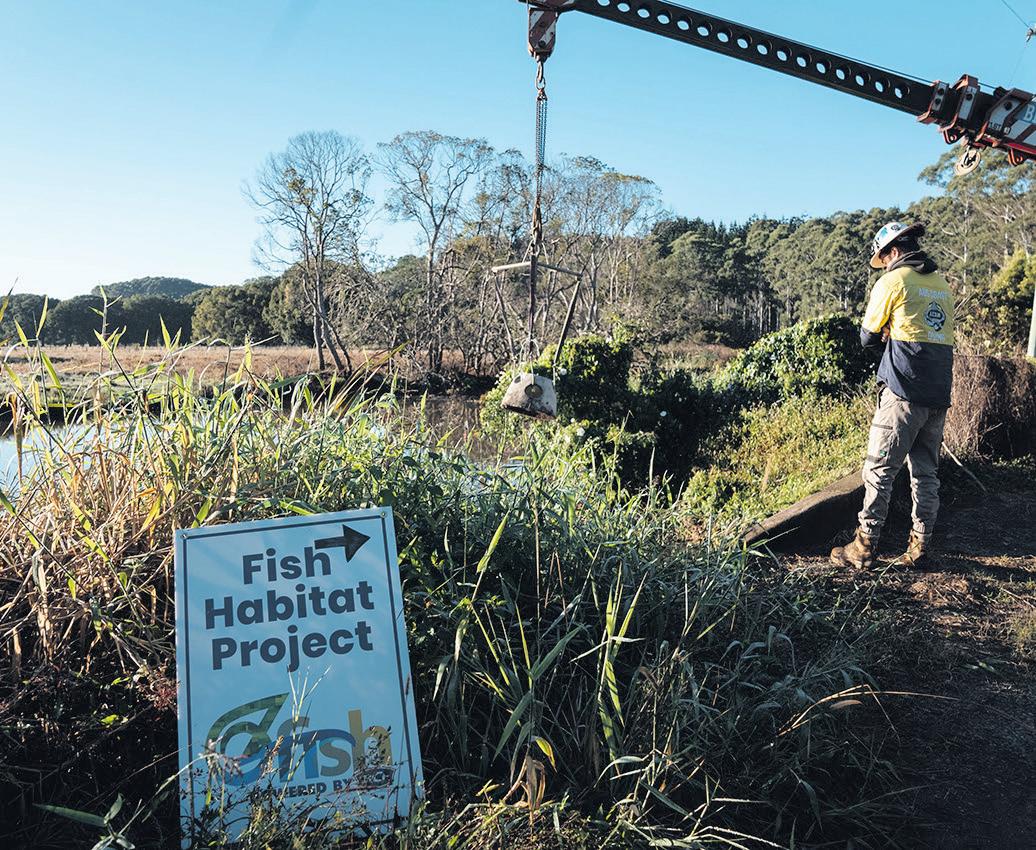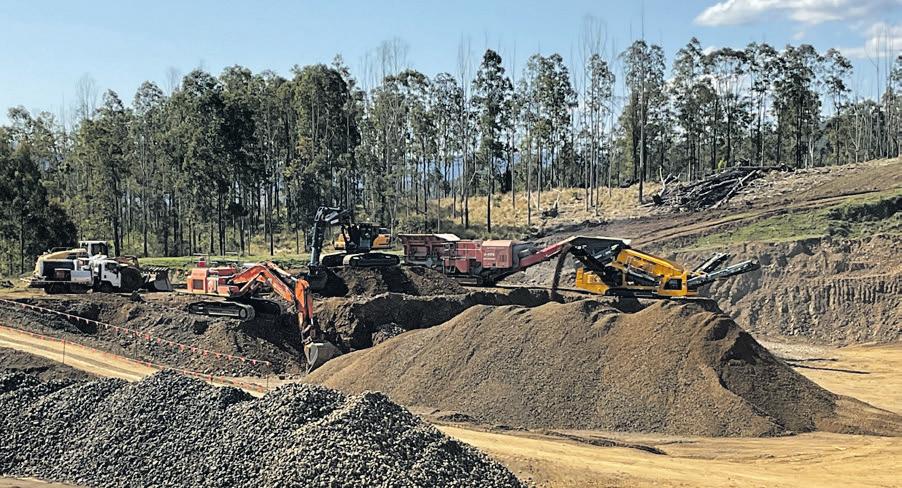
1 minute read
Reviving Emigrant Creek: A Flourishing Sanctuary for Native Fish and Wildlife
Emigrant Creek in northern NSW has undergone a remarkable habitat transformation with the collaborative efforts of OzFish Unlimited, local landholders, and North Coast Local Land Services. A two-year project, funded by the Australian Government’s Fisheries Habitat Restoration program, resulted in the planting of 4500 new native trees and the installation of 25 reef balls, along with the creation of a connected foodplain wetland. This restoration effort has created a thriving habitat for native fsh and other wildlife along a 2.65km stretch of the creek.
The project’s innovative aspect involved the pilot of concrete reef balls, a frst for OzFish in a freshwater environment. These reef balls were strategically placed in the creek to address the lack of in-stream habitat complexity, especially in areas where freshwater mixes with salt. Fishers will monitor fsh use, algae growth, and other organisms on the reef balls to gauge their effectiveness.
One of the project’s signifcant achievements was the reconnection of a critical fsh habitat corridor, serving as a spawning zone for Aussie bass and linking the creek to an open freshwater wetland, which acts as a native fsh nursery during high water levels. Additionally, the restoration efforts tackled the infestation of woody weeds, particularly camphor laurel, along a 4km stretch north of Tintenbar on the western side of Emigrant Creek.


The community’s dedicated efforts over the past fve years have turned Emigrant
Creek into a haven for native fsh, platypus, and turtles. Over 7km of riparian zone has been planted and restored through various initiatives funded by Ballina Shire Council’s Healthy Waterways Program and Local Land Services, showcasing the commitment of OzFish and its partners in this transformation.
Cassie Price, OzFish’s Director of Habitat Programs, praised the collective efforts, emphasizing the positive impact on local fsh habitats. The restoration work involved reconnecting wetlands to the creek, reintroducing native plants to the riverbank, adding woody and rocky structures to the river bottom, eliminating invasive weeds, and addressing pest species to ensure the thriving populations of native fsh.
Although the return









